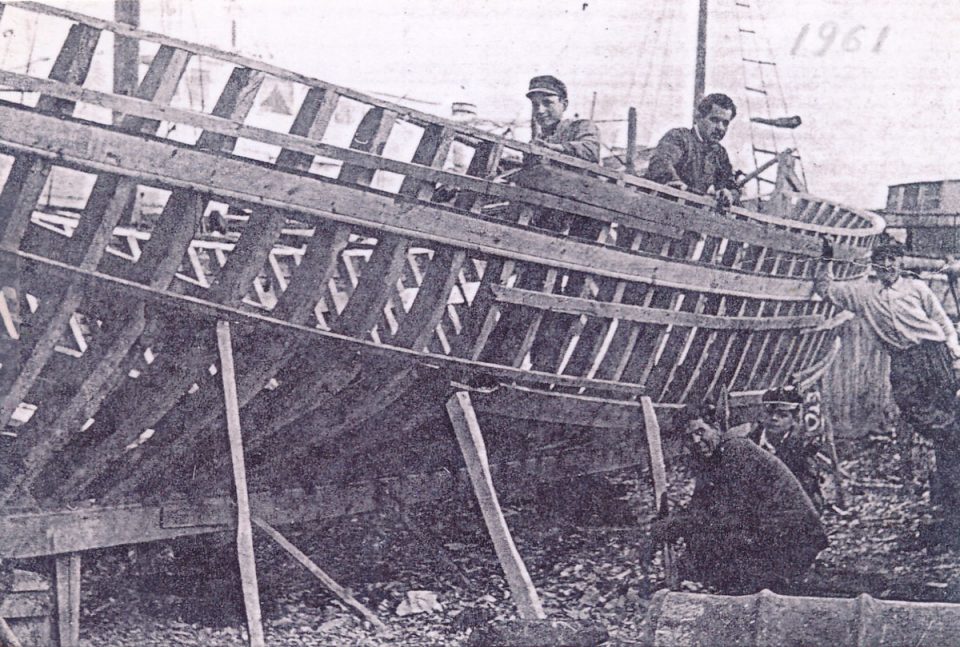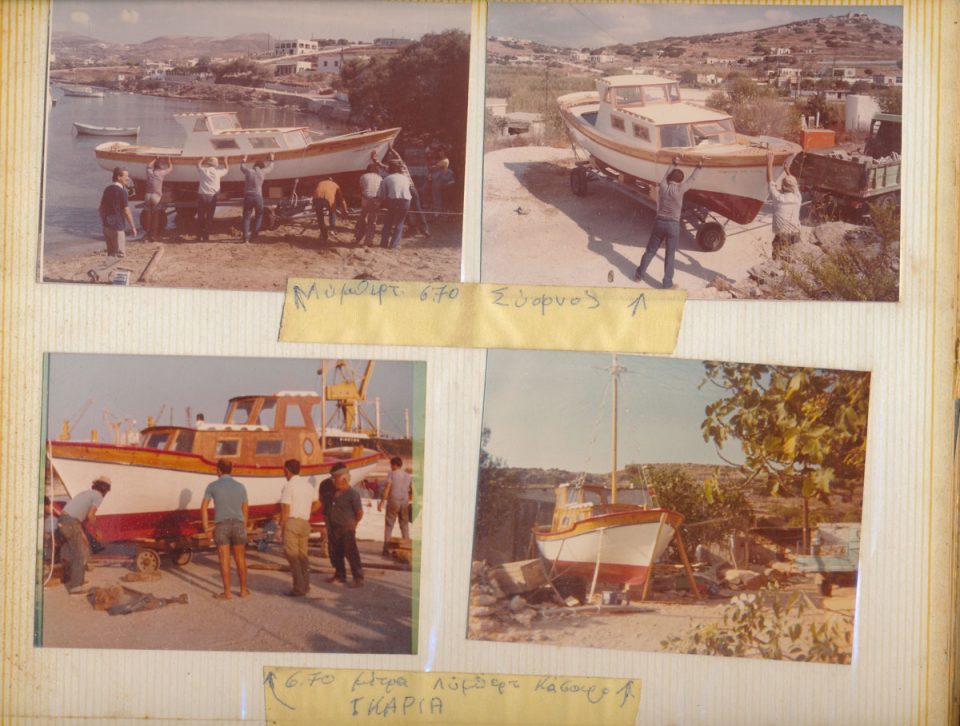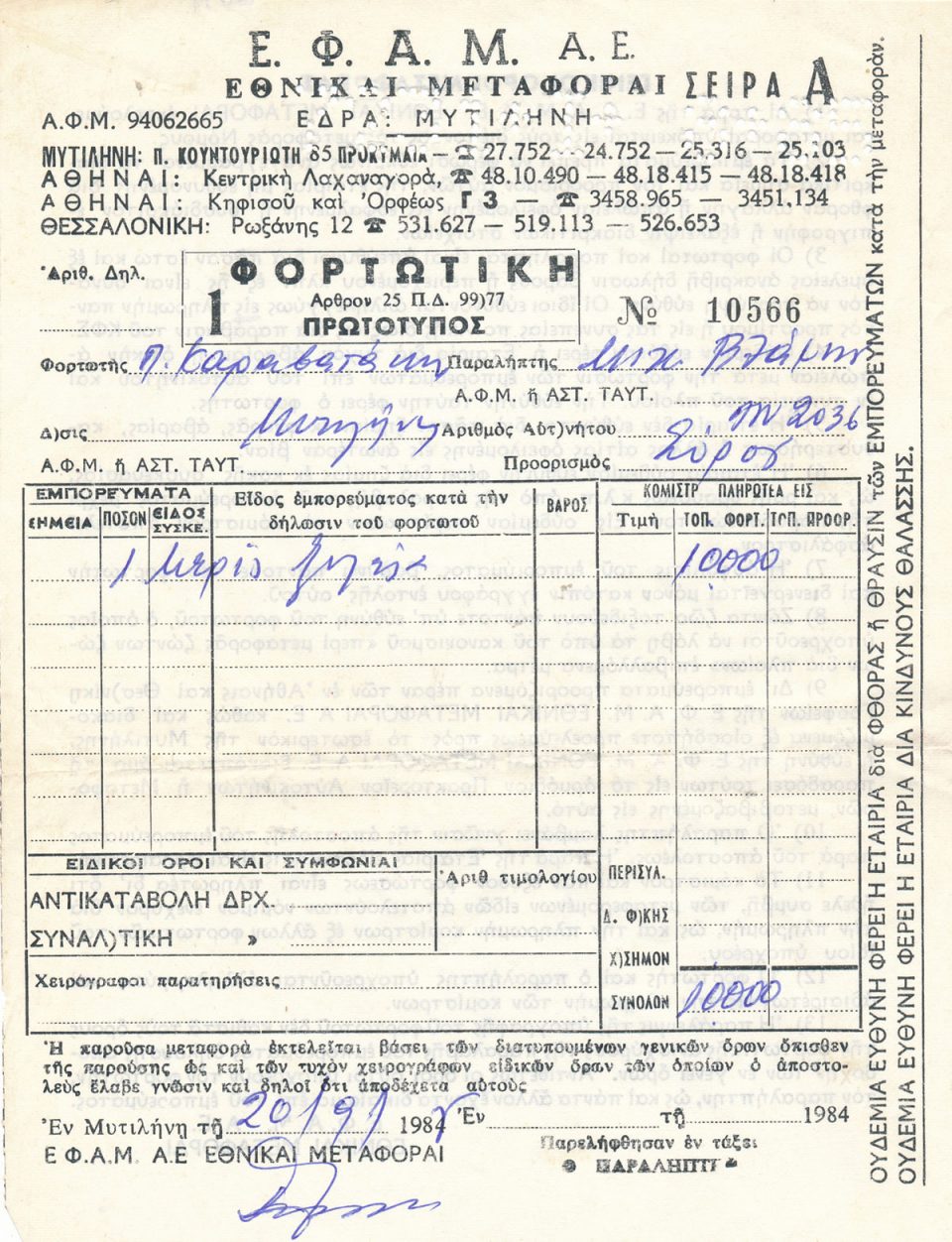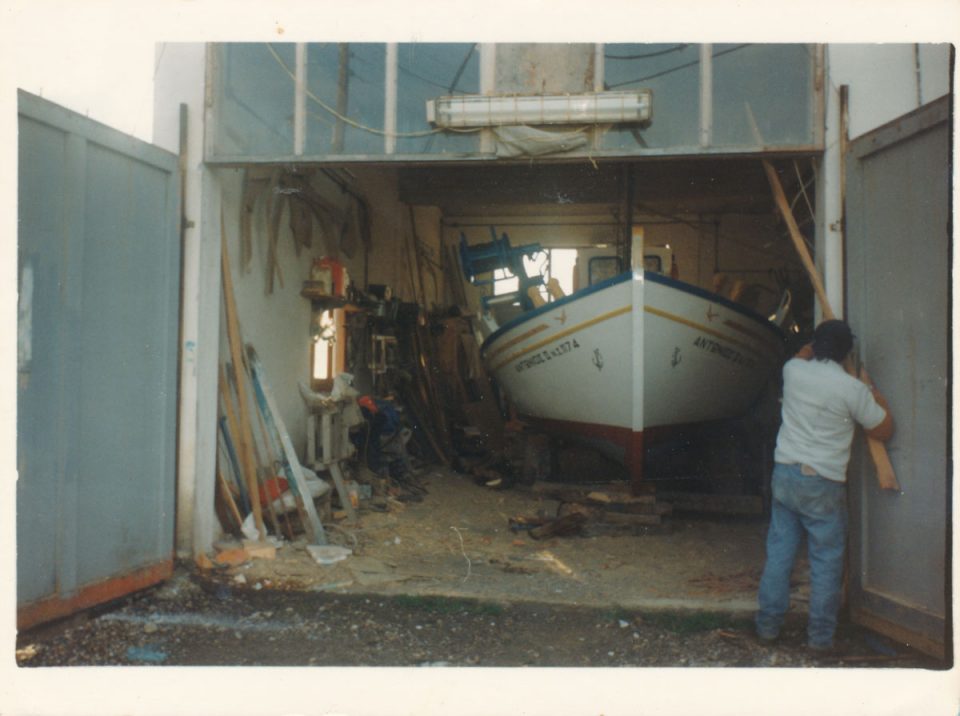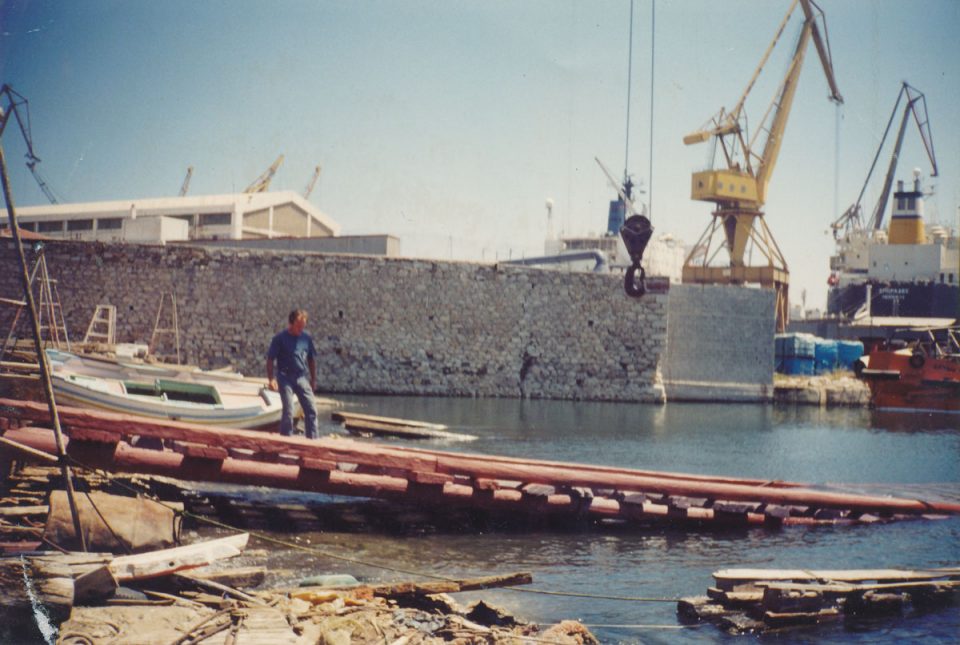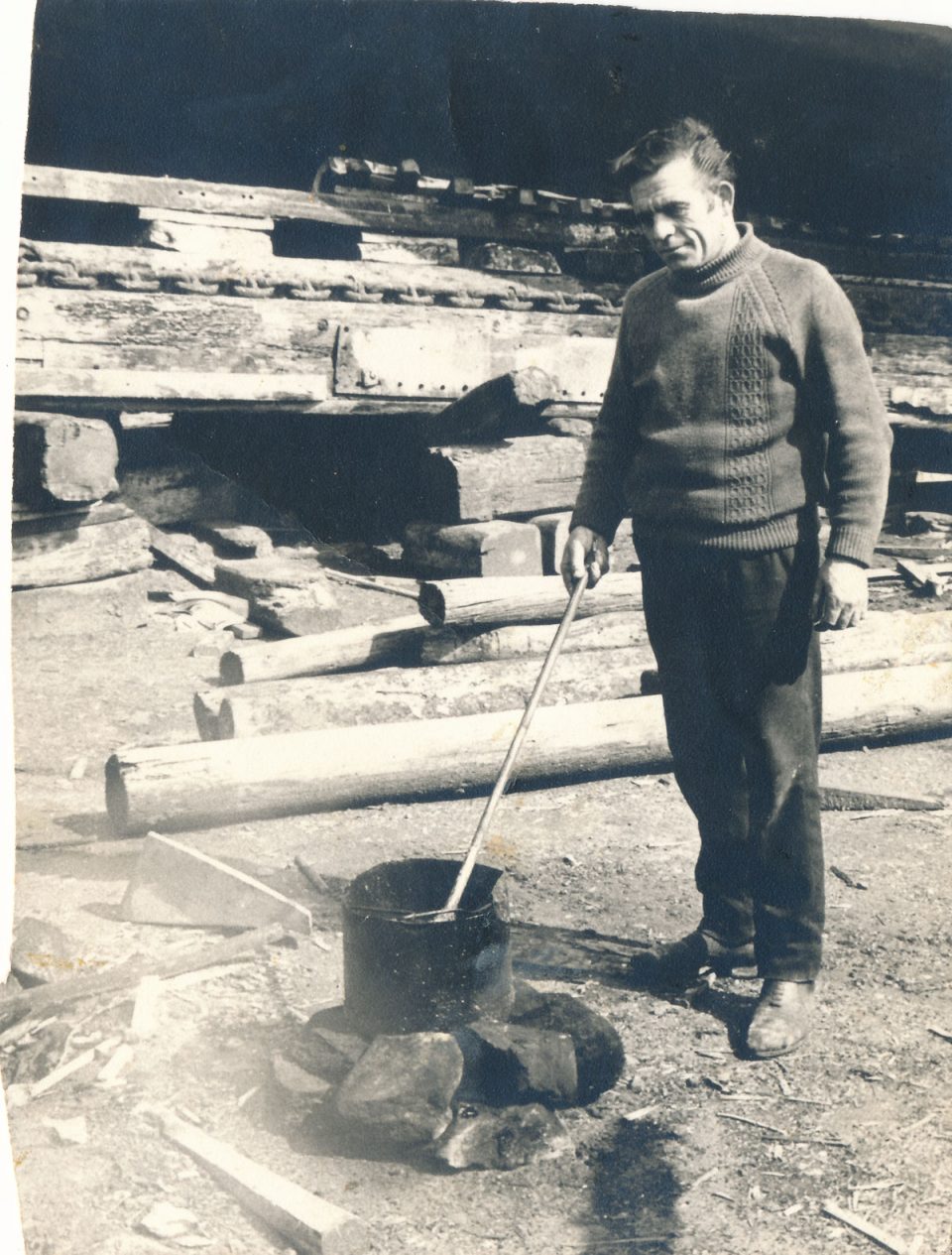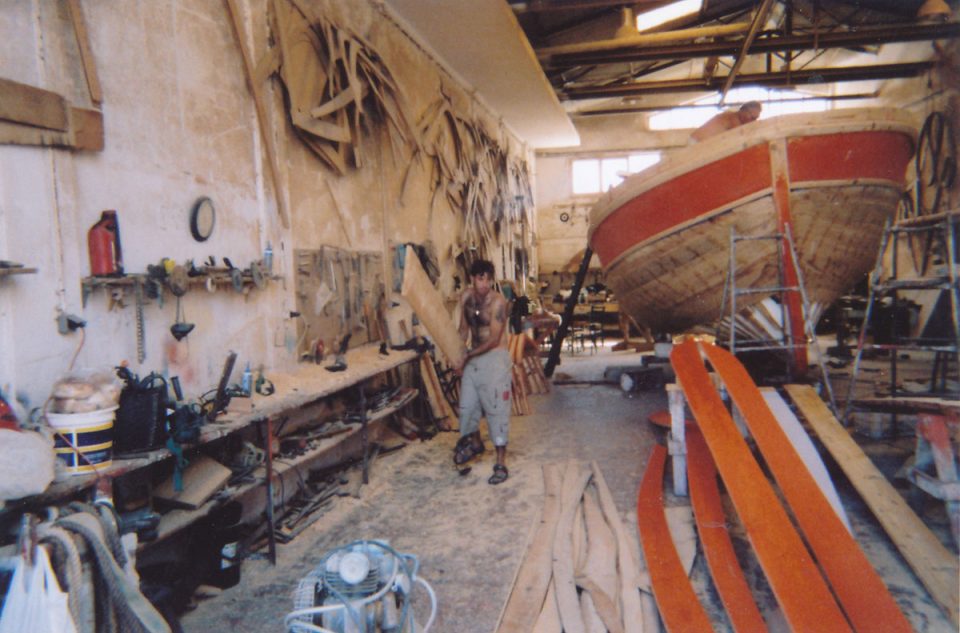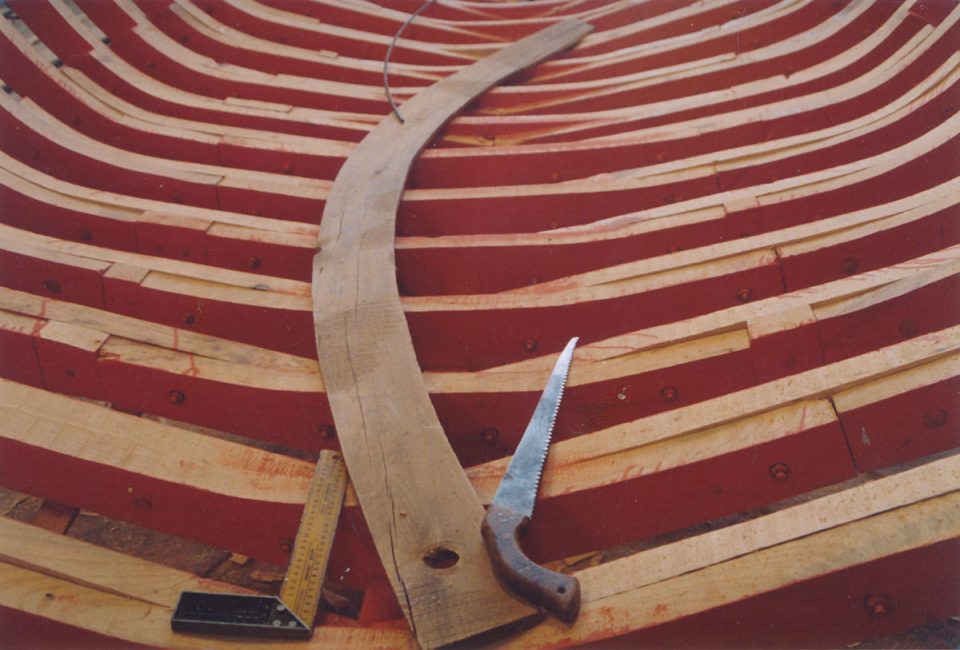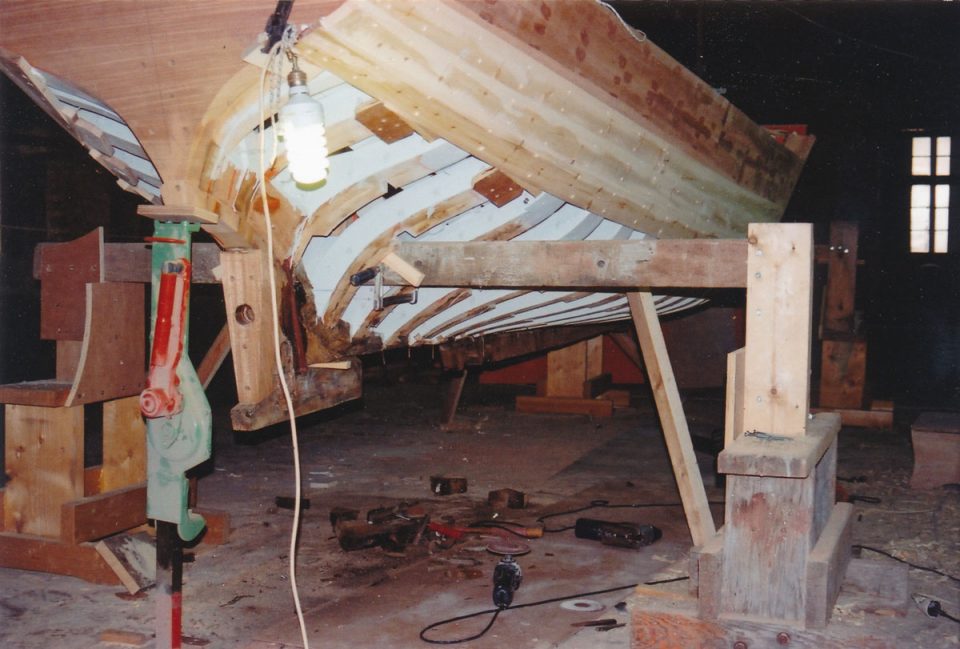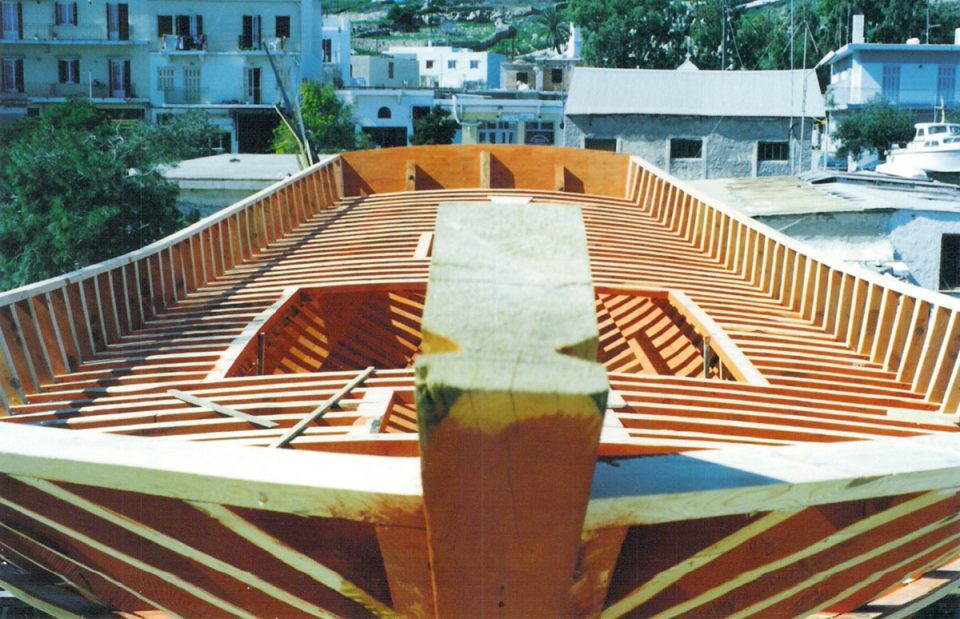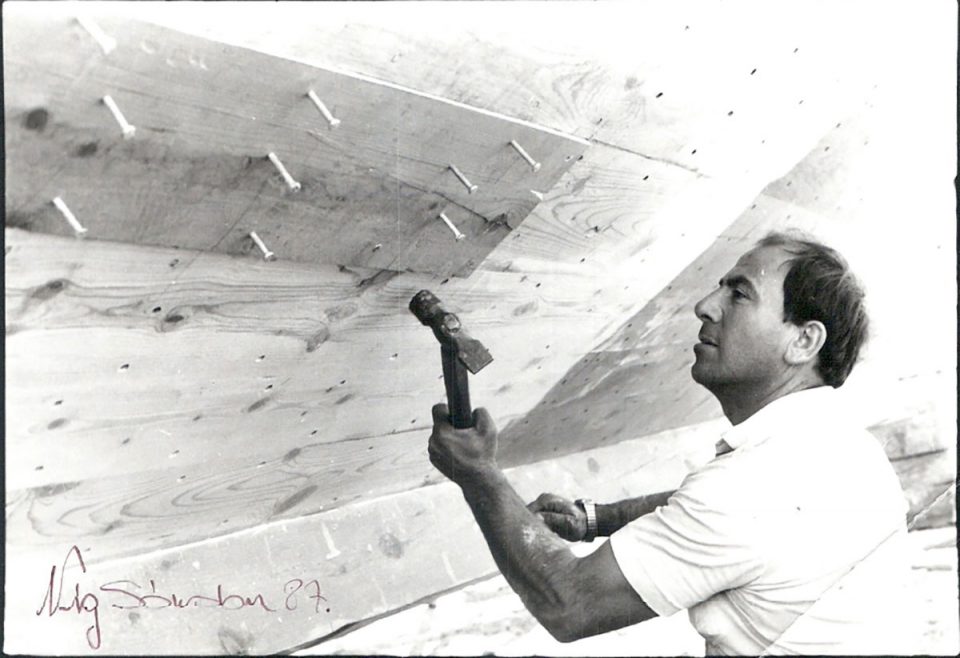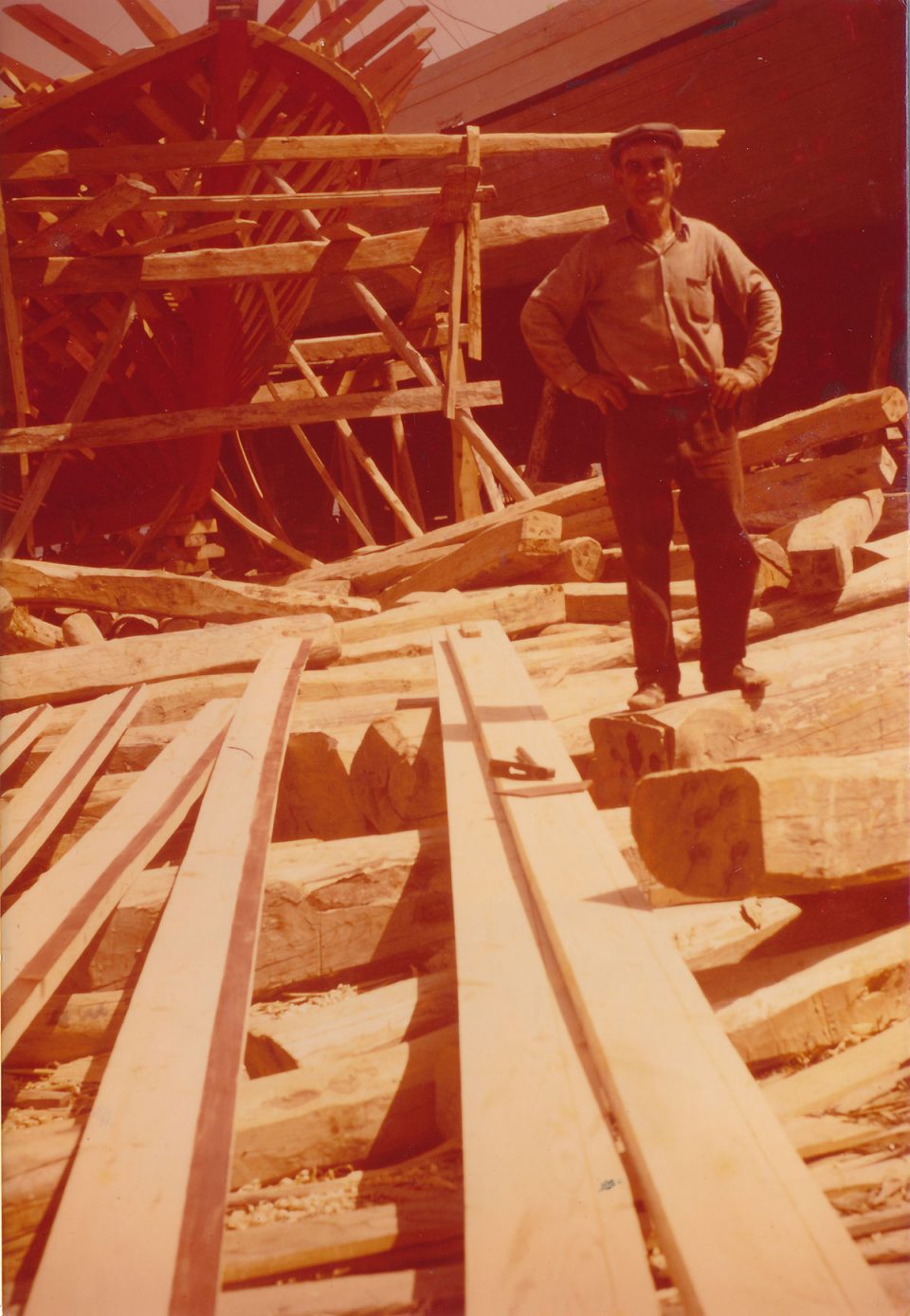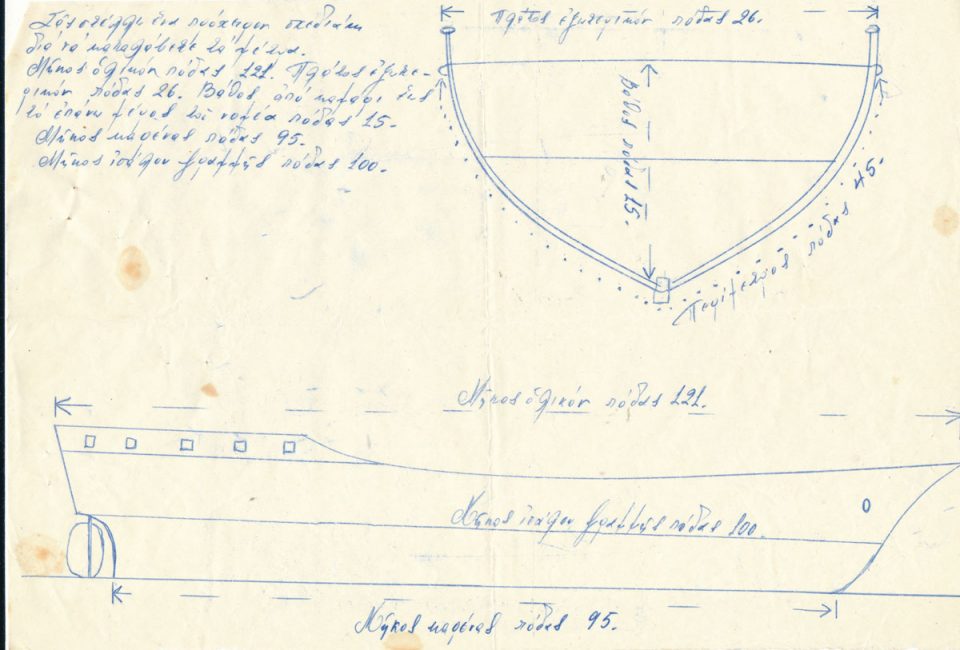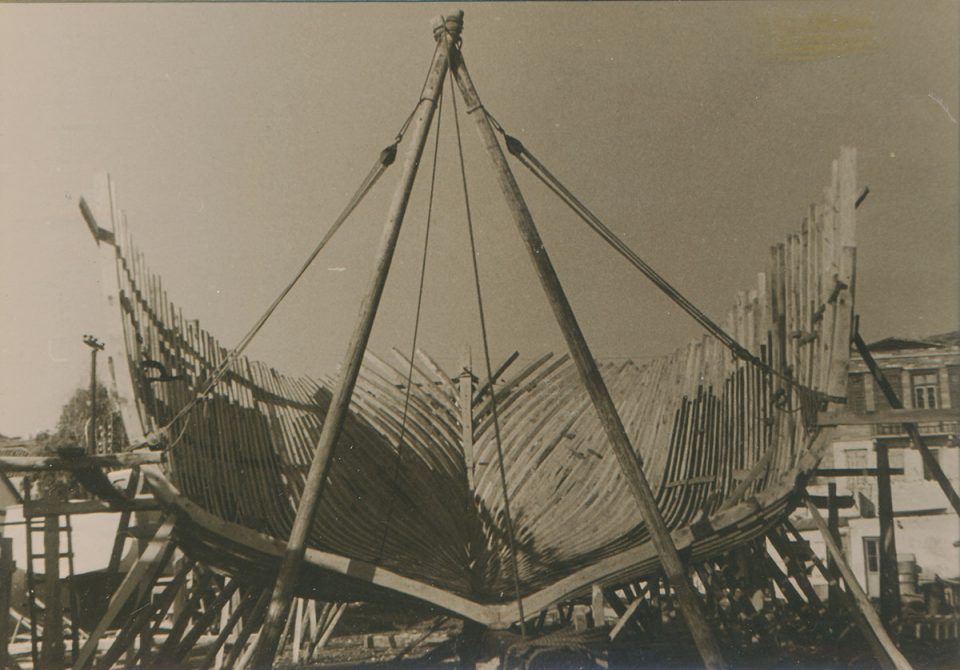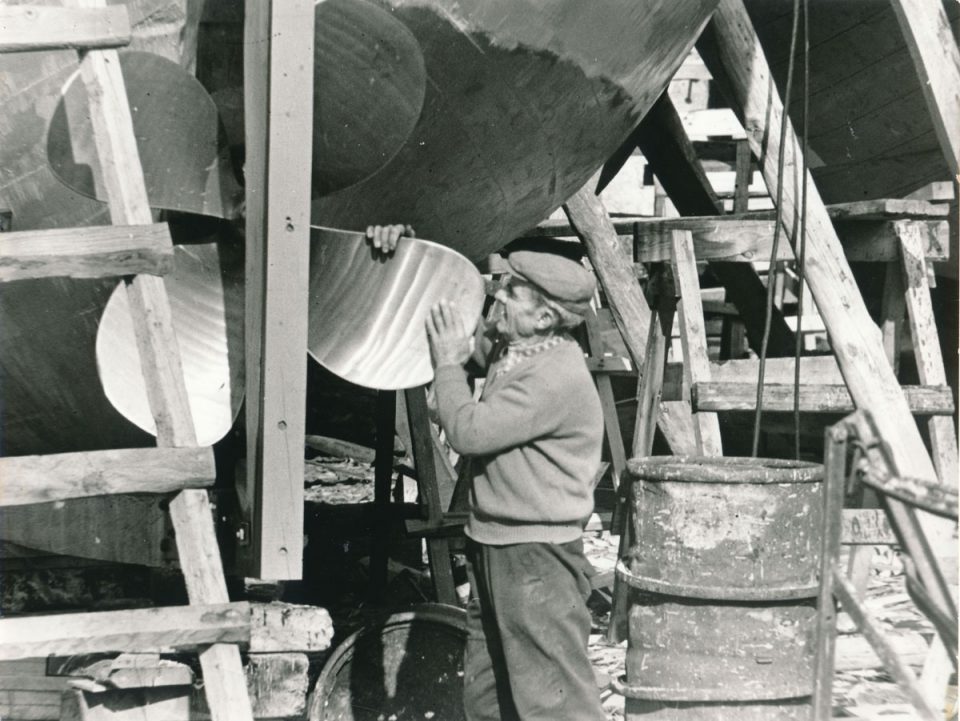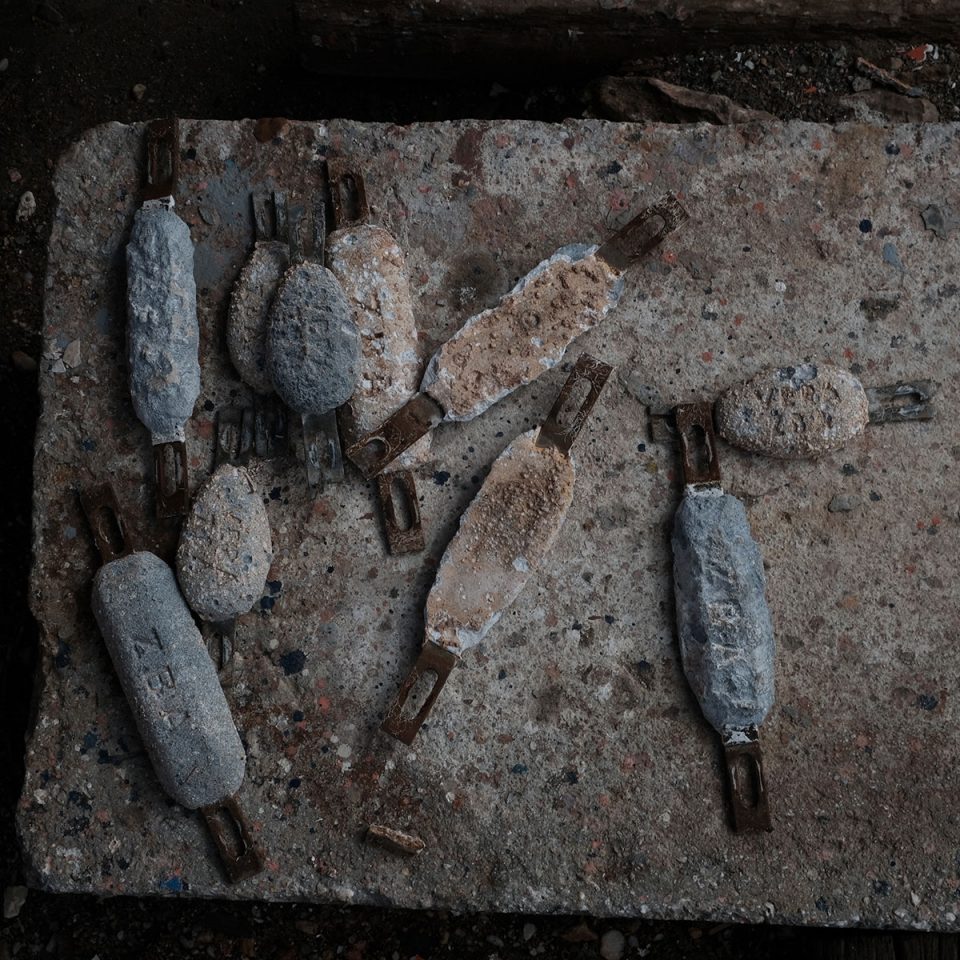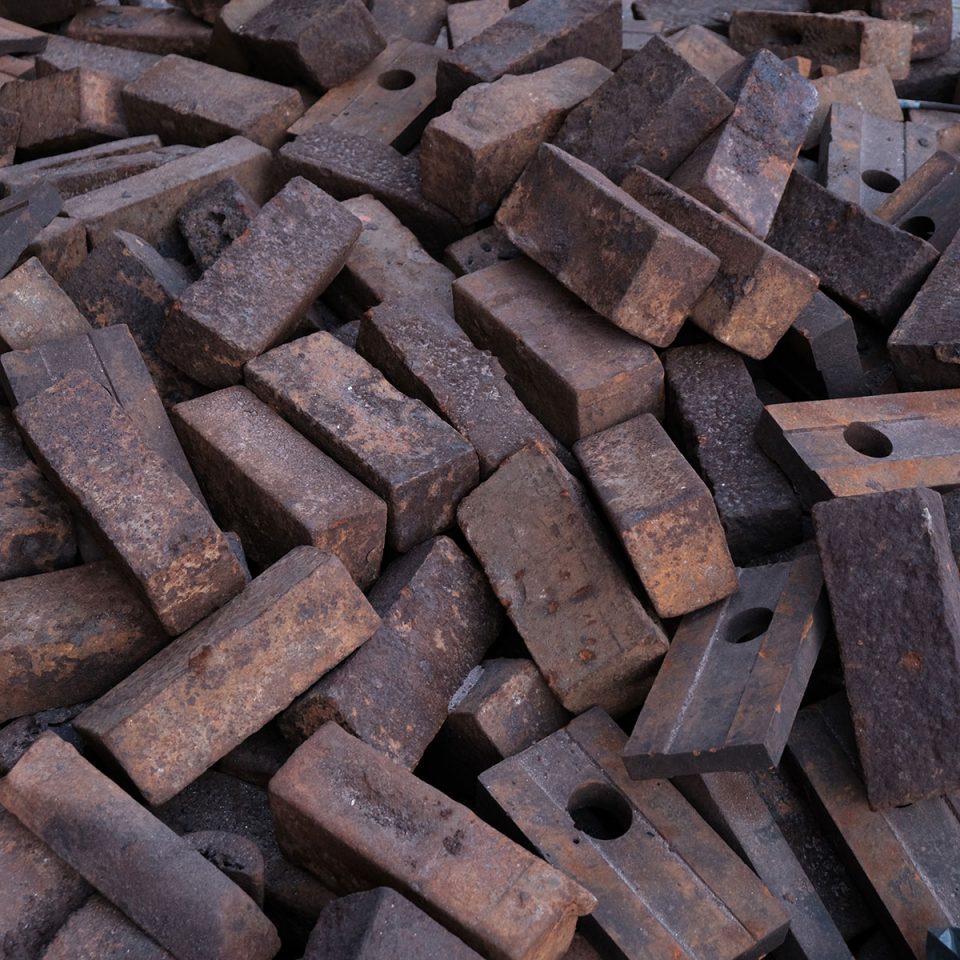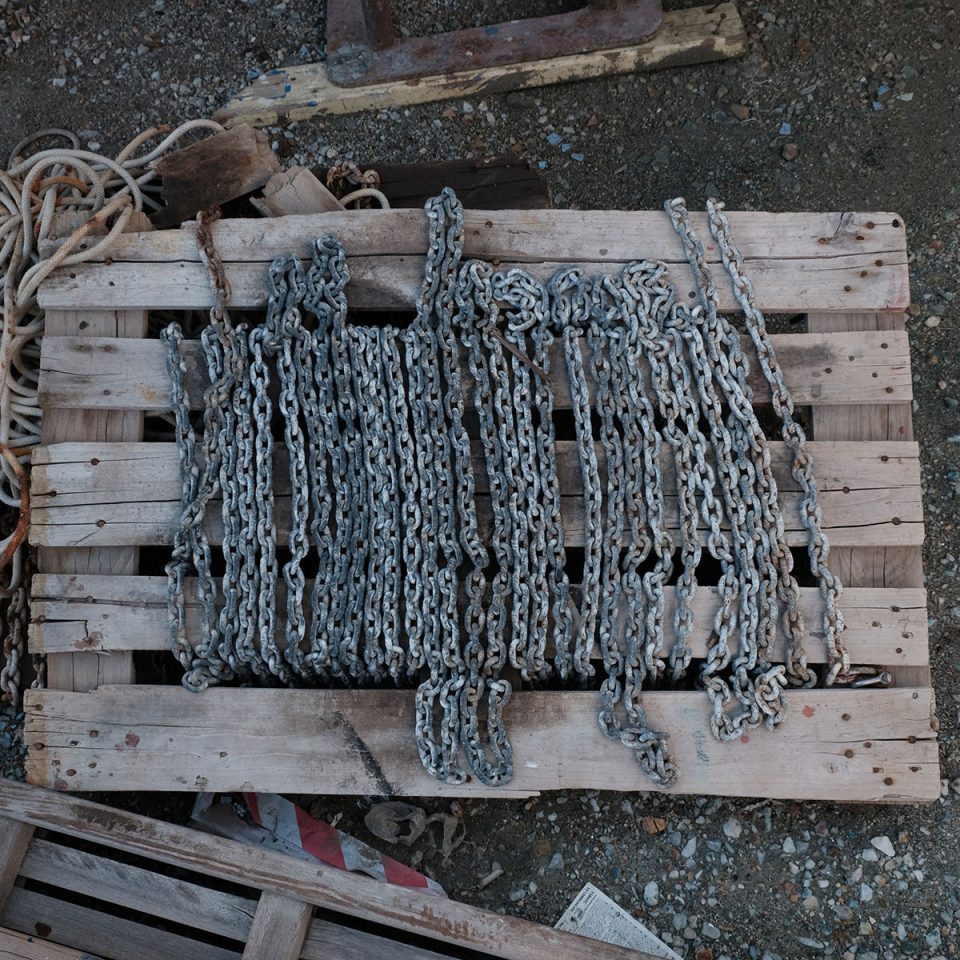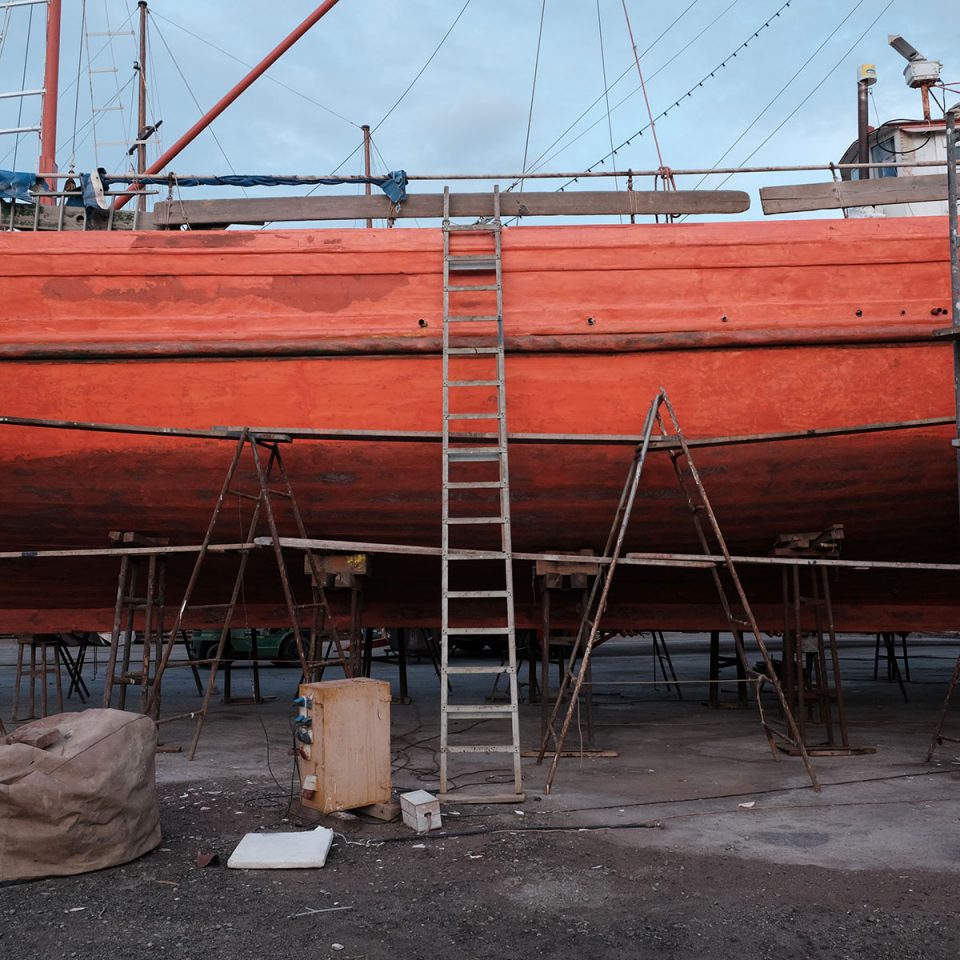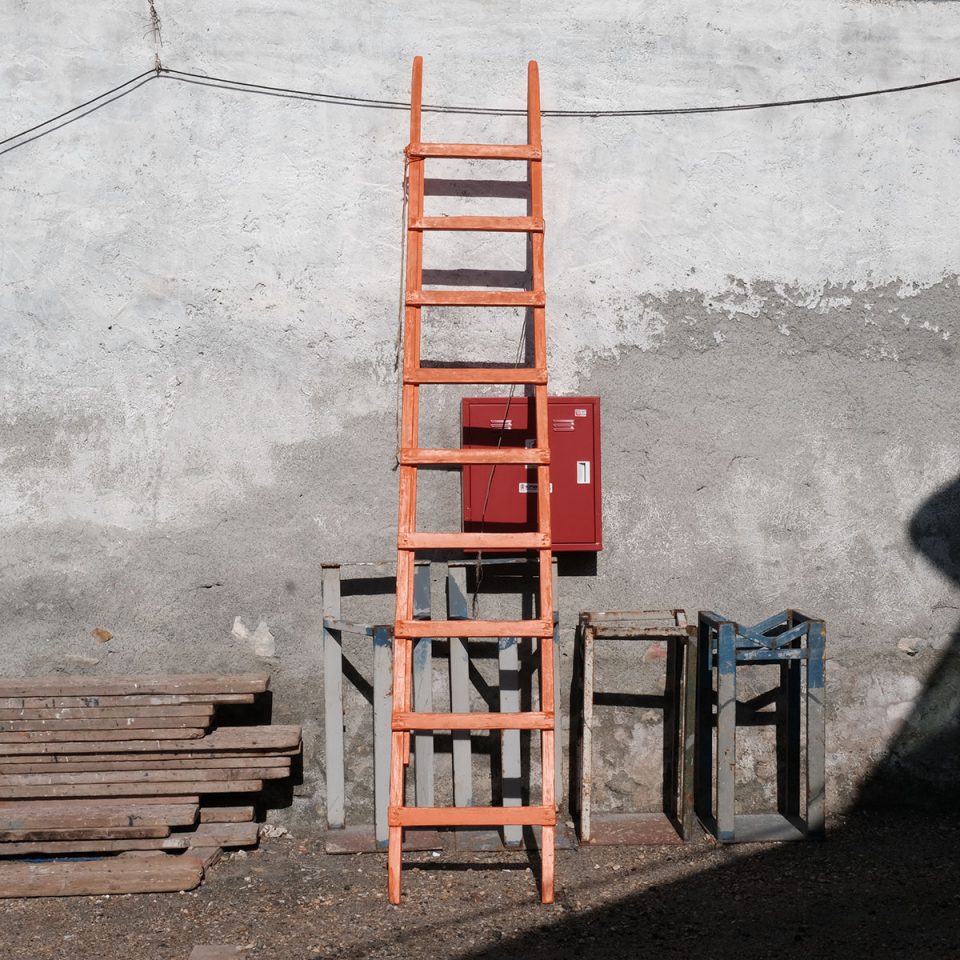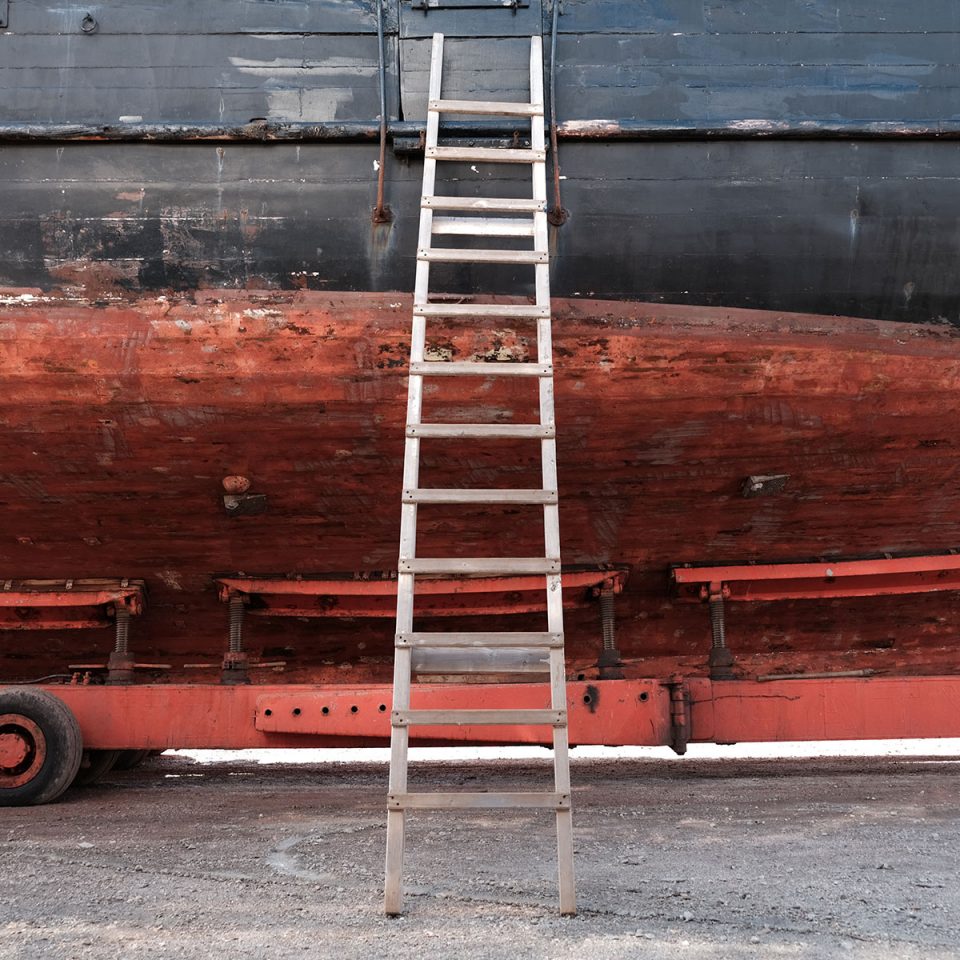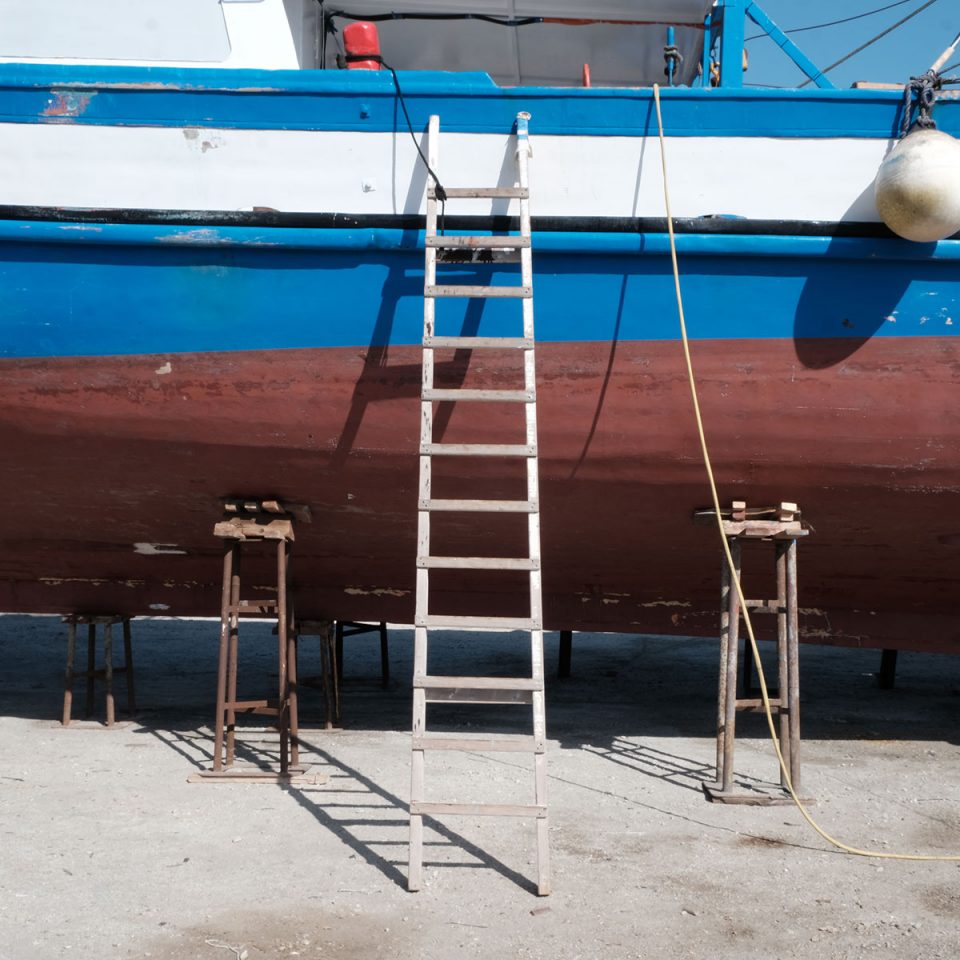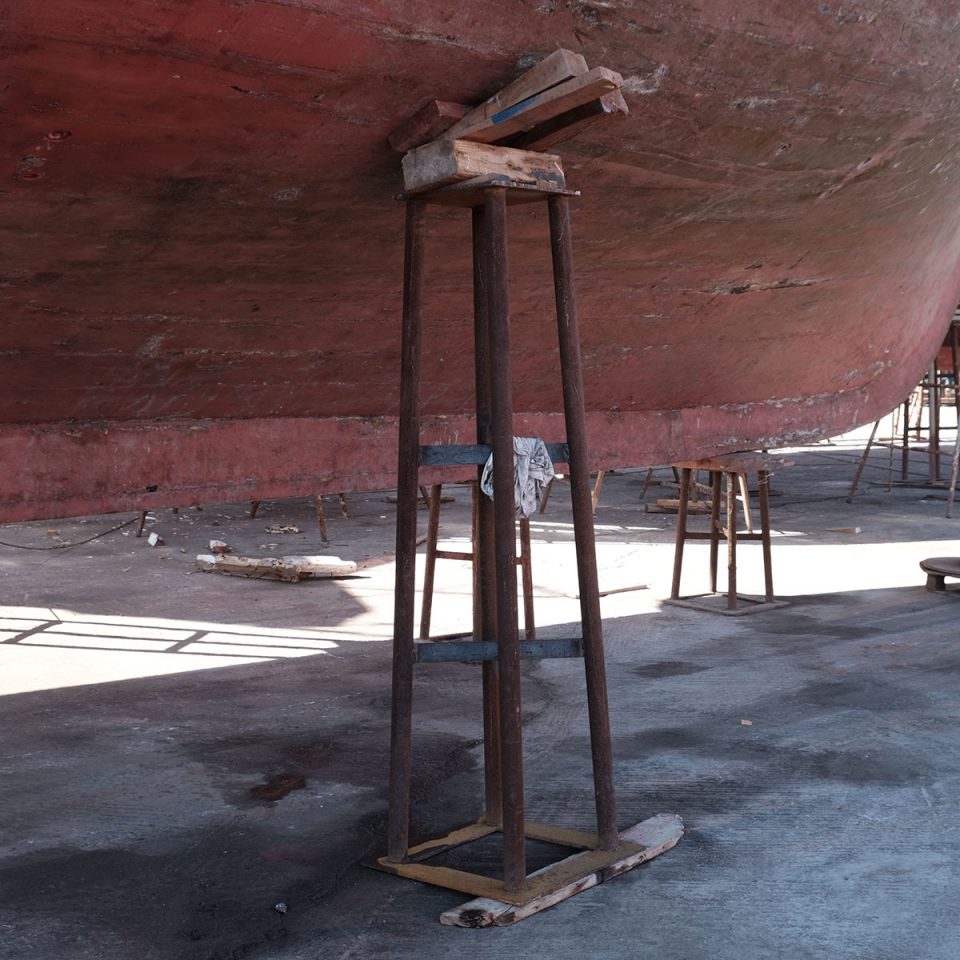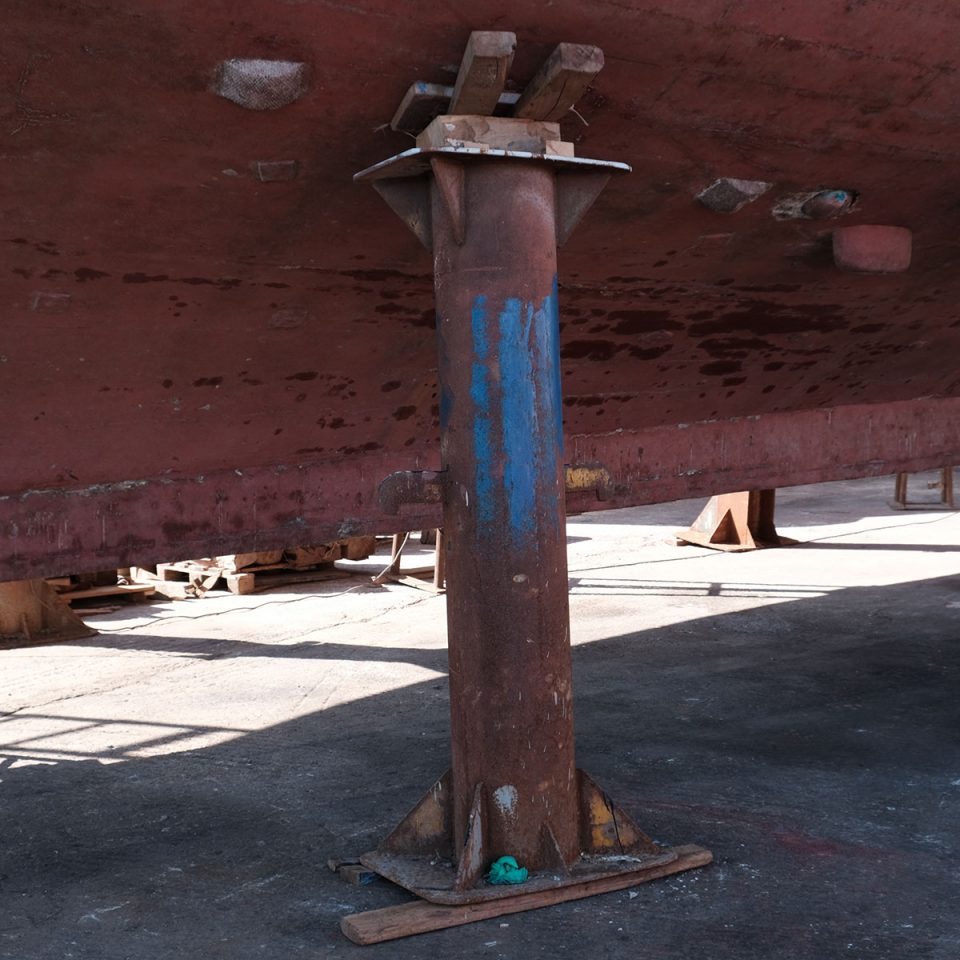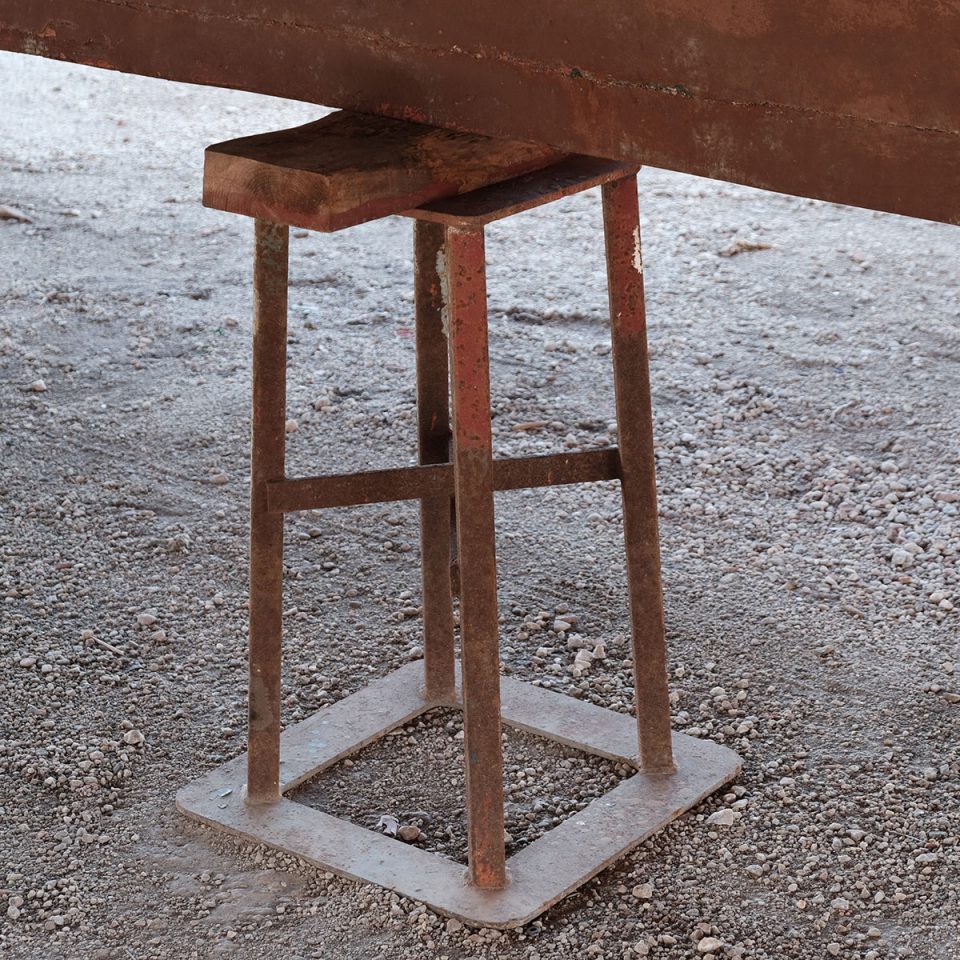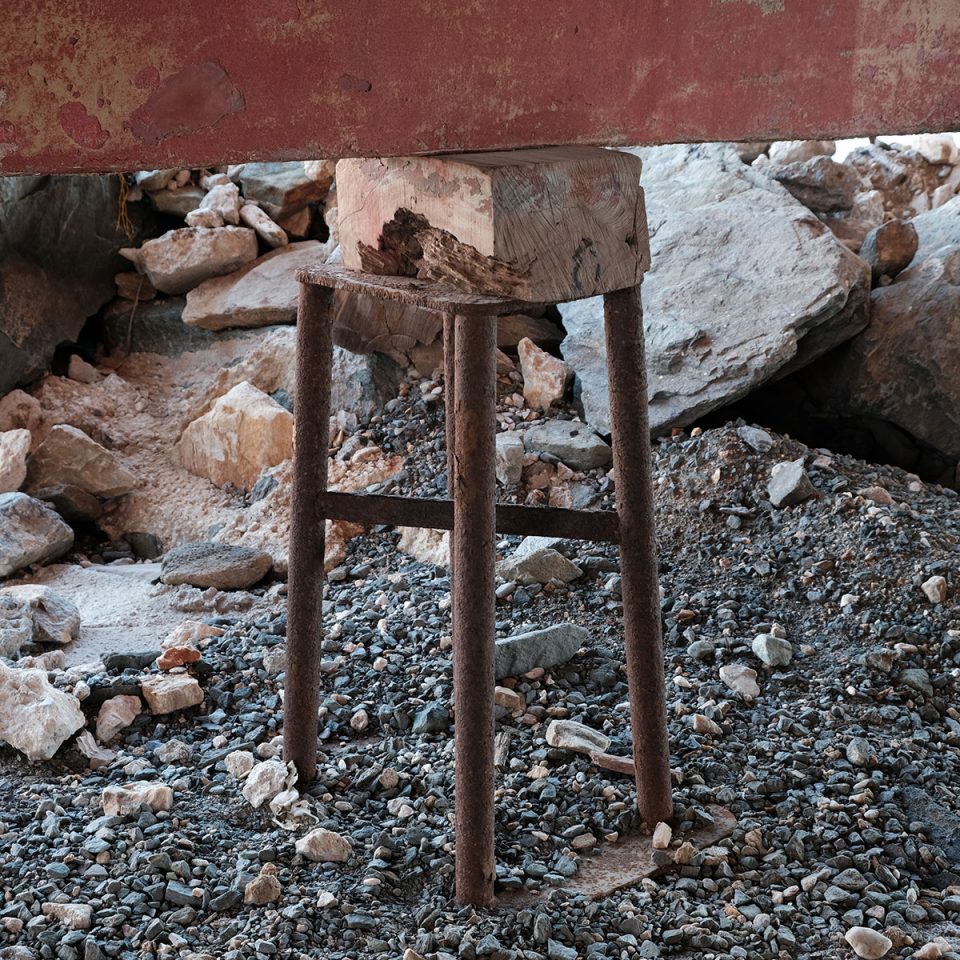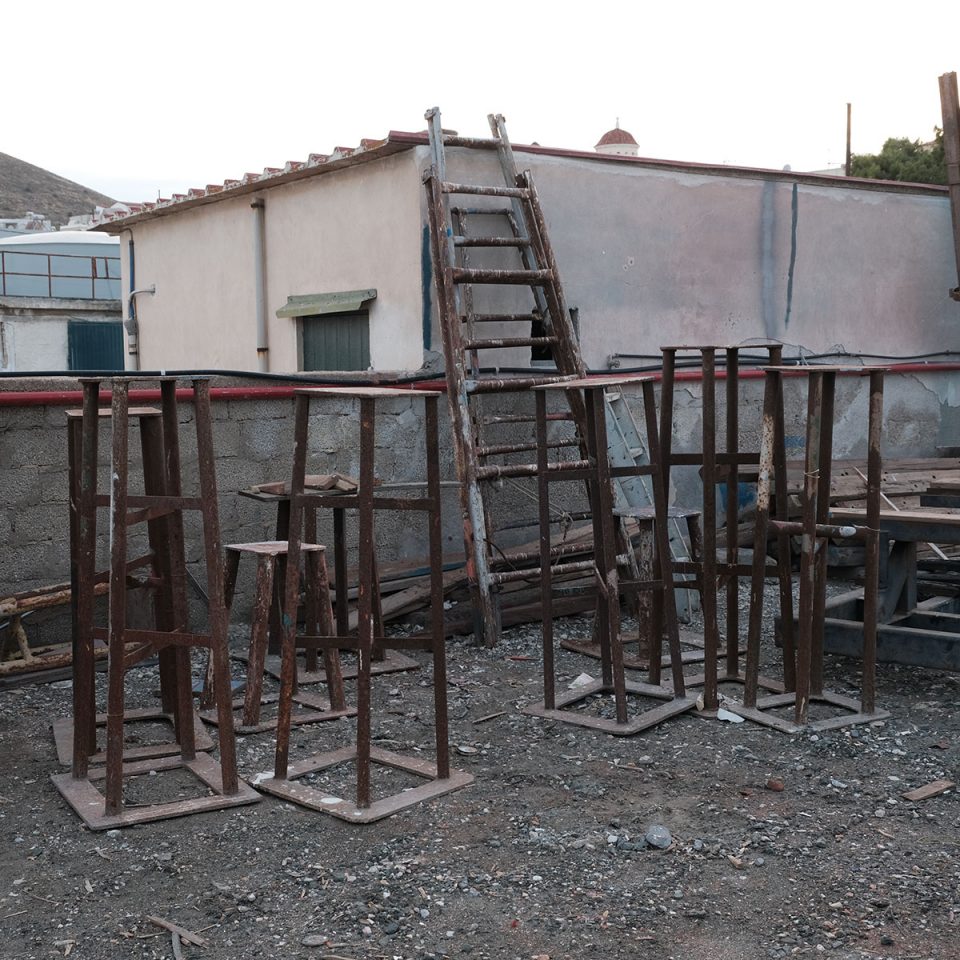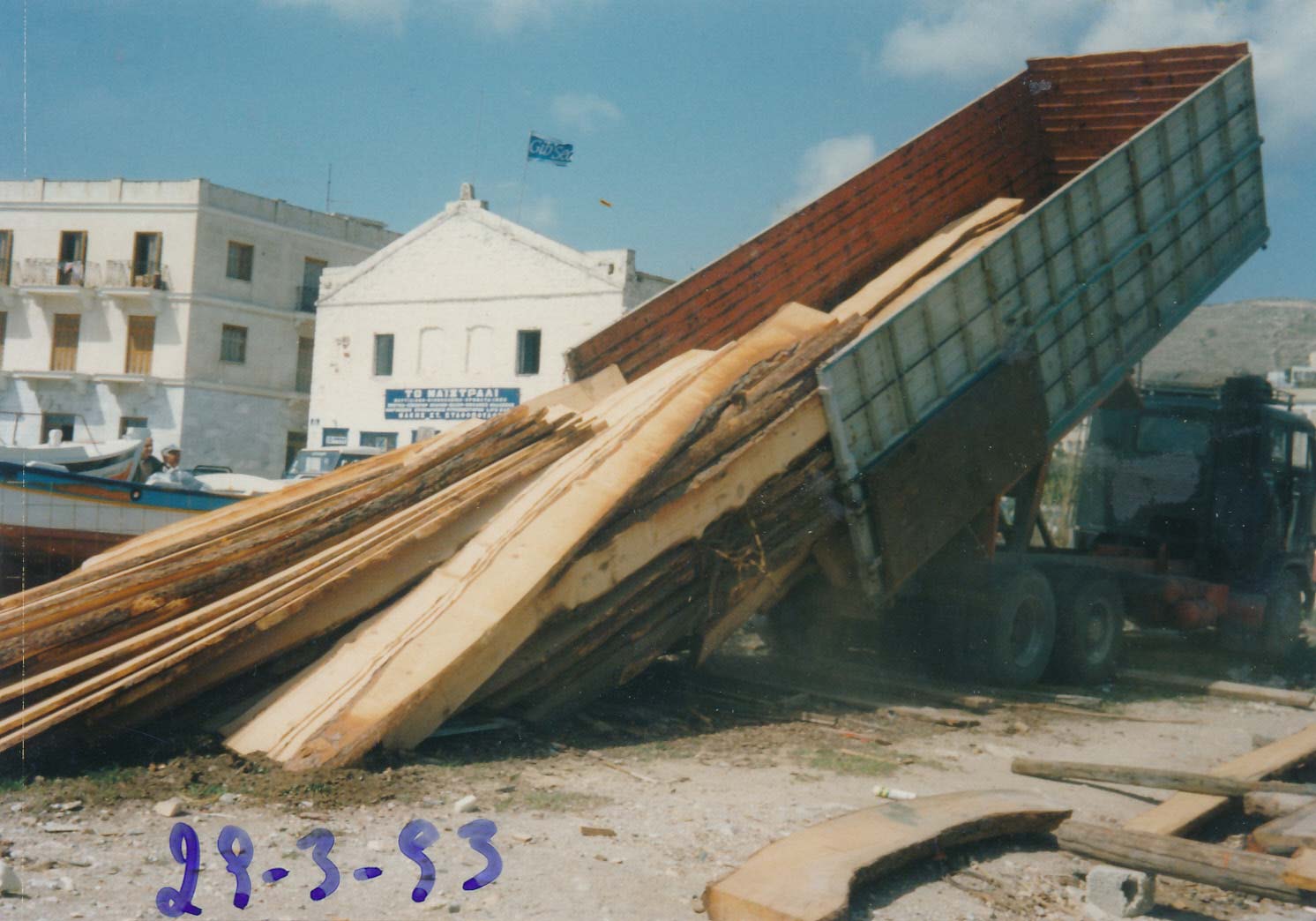
Introduction
A living traditional craft, wooden boatbuilding has been practiced on Syros for millenia; the first known engravings of Aegean ships, made in the ancient settlement of Chalandriani on the island’s northern edge, can be traced to the second Phase of Early Cycladic history (2800-2300 BC). In more recent times, the impressive development of shipping and boatbuilding activity can be traced to a series of historical events around the time of the Greek revolution. As historian Apostolis Delis states in his detailed study on wooden boatbuilding in Syros, “From its founding up until the 1880s, Hermoupolis of Syros was the most important shipping and boatbuilding hub for sailing ships in the Aegean, and likely the eastern Mediterranean.” Over the course of the twentieth century, the advent of steamship technology proved fateful for Syros shipyards, which by and large continued to specialize in the construction of wooden sailing ships. Nevertheless, boatbuilders continued to maintain the tradition, and remained renowned for their craftsmanship.
Today, six active traditional boatyards and maintenance yards exist; threatened by a sharp decline in demand for new wooden boats and EU directives leading to a reduction of the existing traditional fleet, these establishments have turned increasingly to maintenance and repair of vessels used for touristic, fishing and leisure purposes.
Aiming to preserve and celebrate this unique form of intangible cultural heritage, Archipelago Network presents three levels of documentation grounded in a common archival and research methodology: first, the digitization and cataloging of audiovisual materials related to traditional boatbuilding heritage, including photographs, sketches, general arrangement plans and other ephemera sourced from boatyards, maintenance yards, and family archives; second, creation of video portraits focusing on the boatbuilders active on Syros today; and third, the commissioning of textual and visual essays by two researchers. Architect Iris Lykourioti and anthropologist and boatbuilder Maurizio Borriello were both invited to the island in October 2021 to engage with archival materials and enter into dialogue with the boatbuilders themselves, seeking to express these contemporary manifestations of this vital form of intangible cultural heritage in a wider temporal, economic and geographic context.
Archival Materials
Today, four boatyards, one maintenance yard, and one boatbuilding workshop represent the long-standing tradition of wooden boatbuilding on Syros. Tarsanas Shipyard, established in 1864 by the Mavrikos family, is the oldest still active enterprise; located in the southern outskirts of Hermoupolis, it operated until recently a lofting floor used to build boats up to 40 meters in size. The Fouskis boatyard – located in a former industrial zone known as “karnagio” in the outskirts of Hermoupolis which was once the site of boatbuilding units dating back to the 1830s – was established in 1952 by Yannis Zorzos, who learned the trade working as an apprentice at boatyards from the age of five. The Karamolegos boatyard, located in the village of Danakos, was established by Nikolaos Karamolegos in 1981; today, he runs the business along with his daughter Georgia Karamolegos. In 1970, Michalis and Zannis Vlamis established the Vlamis boatyard, located in the village of Episkopio, and currently run by Thanasis Vlamis. Dimitris and Kyriakos Polidoulis’s maintenance yard, in the “karnagio” zone of Hermoupolis, has specialized in the caulking and repair of traditional boats for five generations; finally, there is the Tsimbas boatbuilding carpentry workshop, located nearby and run by Spyros Xagoraris, who has specialized in various repair and maintenance services for traditional boats since the early 1980s.
The below materials represent a small portion of the rich archive of material collected and digitized by Archipelago Network in collaboration with the above establishments. Additional materials can be found in the individual collections focusing on each boatyard in Archipelago Network’s archival collections page. Selected historic materials from the Tarsanas shipyard, part of a collection concerning boatbuilder Georgios Mavrikos donated to the Industrial Museum of Hermoupolis, were provided courtesy of the Museum and the Municipality of Syros-Hermoupolis, and digitized by Archipelago Network. Digitized photographs from the Zouloufos family archive were provided courtesy of Michalis Zouloufos. We are grateful to Arxeion Taxis for its support in development of an archival methodology and content management system, and to Mamidis Photography for its assistance in digitizing the above materials.
1/ 9.5 m “trechantiri” type boat, c. 1985. Fouskis Boatyard.
2/ From left: Mastro-Giannis Zorzos, Giorgos Zorzos, Nikolaos Zorzos, c. 1996. Fouskis Boatyard.
3/ Mastro-Giannis Zorzos being shaved in his workshop, c. 1980. Fouskis Boatyard.
4/ A “trechantiri” type boat outside of the Fouskis Boatyard, with Mastro-Giannis Zorzos and others, c. 1961. Fouskis Boatyard.
5/ Lumber delivery from Mytilene, c. 1980. Fouskis Boatyard.
6/ Mastro-Giannis Zorzos at work on a “koundoulo” type boat, c. 1970. Fouskis Boatyard.
7/ Large-format photo album compiled by Nikolaos Karamolegos depicting assorted boats, c. 1980. Karamolegos Boatyard.
8/ Customer’s sketch outlining desired boat, c. 1980. Karamolegos Boatyard.
9/ Repair of “Agios Nikolaos,” c. 1990. Karamolegos Boatyard.
10/ Transport slip for wood delivery from Mytilene, 1984. Karamolegos Boatyard.
11/ Front of Karamolegos Boatyard, before transport of a 6.5 m “trechantiri” type boat, c. 1999. Karamolegos Boatyard.
12/ Karamolegos Boatyard business card, c. 1980. Karamolegos Boatyard.
13/ Disassembly of a boat. From left: Zannis Bougioukas, Kyriakos Polidoulis, c. 1955. Polidoulis Boatyard.
14/ Dimitris Polidoulis on a wooden ramp, preparing for a drydock, c. 1985. Polidoulis Boatyard.
15/ Kyriakos Polidoulis preparing a traditional ramp lubricant, c. 1960. Polidoulis Boatyard.
16/ Georgios Polidoulis at work, c. 1970. Polidoulis Boatyard.
17/ Dimitris Polidoulis resting on a wooden ramp, c. 1975. Polidoulis Boatyard.
18/ Newspaper clipping from “To Vima” featuring the Polidoulis maintenance yard, Jan. 19, 1994. Polidoulis Boatyard.
19/ General arrangement plan of a “trechantiri” type boat by Zannis Vlamis, c. 1980. Vlamis Boatyard.
20/ Thanasis Vlamis at work on a 8.2 m liberty type boat, c. 2010. Vlamis Boatyard.
21/ Construction of an 11 m. “trechantiri” type boat, c. 1973. Vlamis Boatyard.
22/ Principal frames of “trechantiri” type boat under construction, c. 2010. Vlamis Boatyard.
23/ Shaping of a stern frame for a trechantiri type boat under construction, c. 2008. Vlamis Boatyard.
24/ Thanasis Vlamis at launch of a “koutoulo” type boat in Kini bay, c. 1995. Vlamis Boatyard.
25/ From left: unknown, and Vagelis Xagoraris at a boatyard in Varkiza, c. 1980. Tsimbas Boatbuilding Carpentry.
26/ Vagelis Xagoraris at work on a liberty type boat, c. 1975. Tsimbas Boatbuilding Carpentry.
27/ Vagelis Xagoraris and a client’s daughter during construction of a “trechantiri” type boat, c. 1975. Tsimbas Boatbuilding Carpentry.
28/ Repair of the “Bouboulina,” c. 2012. Tsimbas Boatbuilding Carpentry.
29/ From left: Vagelis Xagoraris, Evagelos Paravalos, Aris Mavrikos on a liberty type boat, c. 1960. Tsimbas Boatbuilding Carpentry.
30/ Repair of the “Thirasia,” c. 2016. Tsimbas Boatbuilding Carpentry.
31/ Construction of “Ammoudi Armeni” boat, c. 1980. Zouloufos Collection.
32/ Construction of unknown boat, c. 1985. Zouloufos Collection.
33/ Boatbuilder Zouloufos at work, c. 1980. Zouloufos Collection.
34/ Giorgos Mavrikos at work on the “Eleftheria,” c. 1970. Tarsanas Shipyard.
35/ Letter addressed to Andreas Embiricos detailing dimensions of the “Kyma,” (1 of 2) c. 1959. Tarsanas Shipyard.
36/ Combination of “karavoskaro” and liberty type boat under construction, c. 1965. Tarsanas Shipyard.
37/ Photograph from Georgios Mavrikos’s personal archive, courtesy of the Industrial Museum of Hermoupolis. Undated. Tarsanas Shipyard.
38/ Photograph from Georgios Mavrikos’s personal archive, courtesy of the Industrial Museum of Hermoupolis. Undated. Tarsanas Shipyard.
39/ Photograph from Georgios Mavrikos’s personal archive, courtesy of the Industrial Museum of Hermoupolis. Undated. Tarsanas Shipyard.
Video Portraits: Boatbuilders
Shot on location in November 2021, these video portraits provide a window into the lives, working environments and techniques of the boatbuilders continuing the tradition of wooden boatbuilding on Syros today. Additional portraits including these boatbuilders, sea captains and fishermen produced in collaboration with the Friends of the Museum of Aegean Boatbuilding and Maritime Crafts, are forthcoming and will be available on the digital platform “Boats and Boatbuilding in Modern Cultural Heritage.”
“Tarsanas Boatyard: Details”
by Maurizio Borriello
Due to a variety of dynamics both local and international in scope, traditional boatbuilding has experienced a rapid decline in Greece since the late 1980s. Maurizio Borriello visits the Tarsanas Shipyard of Syros in the fall of 2021, documenting a boatyard where boat maintenance and storage have long surpassed the construction of new boats as primary activities and sources of income. The lofting floor and timber saws, formerly essential for the construction of new vessels, have been replaced by a variety of implements used in maintenance and repair: chains, counterweights, custom-built ladders, struts and wooden blocks. The details in this four-part photo series provide a glimpse of the continuing ingenuity of the craft, as well as an allegory of its delicate, urgent balancing act for survival.
Maurizio Borriello is a boatbuilder, anthropologist and PhD student at the University of Naples L’Orientale. He is currently conducting research on living boatbuilding traditions in Indonesia and the Mediterranean basin.
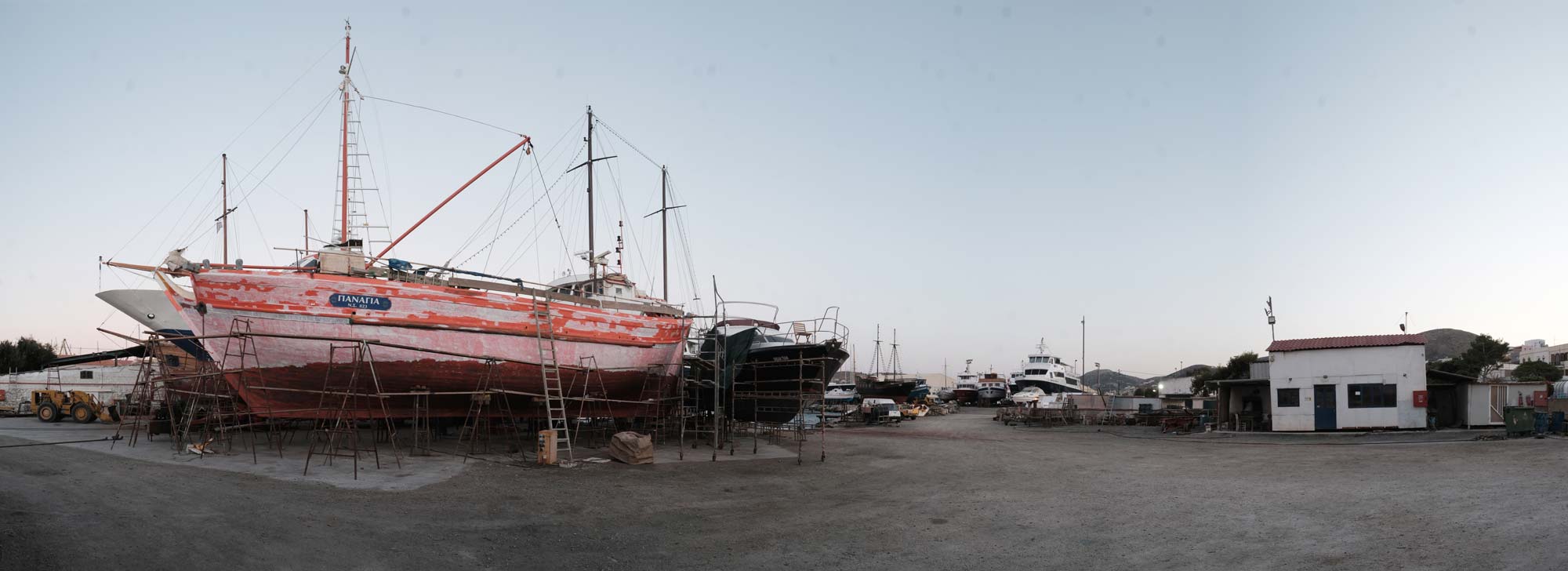
“Technogeographies of Wooden Boatbuilding”
by Iris Lykourioti
Through the transcription of archived documentation produced during Iris Lykourioti’s trip with the Archipelago Network team to the boatyards of Syros in October 2021, a set of interconnected relations emerge between expanses of land and sea, traditional techniques and artistry; in other words, what emerge are various aspects of the technogeographies of wooden boatbuilding.
The survival of an entire ecosystem of boatbuilding workshops, but also the survival of a geographically extensive and cognitively expansive network of trades in the mountains (forestry, logging), the mainland (cotton), and maritime regions (fishing, seafaring) – indeed, the survival, reproduction and positive transformation of a certain technogeography – is a necessary and sufficient condition for the survival of a traditional material knowledge system both technical and artistic in nature such as wooden boatbuilding.
Iris Lykourioti is an architect (NTUA 1996, 2001) and Assistant Professor at the Department of Architecture, University of Thessaly, Greece. In 2005, she co-founded “A Whale’s architects,” an office based in Athens and Brussels, concerned with objects, edifices, and research on how the former are produced and used.
Iris Lykourioti’s research contribution consists of a detailed two part text and five diagrams: the text will be published on this page soon. The five diagrams, presented below, depict the dynamics discussed at length in the accompanying text.








